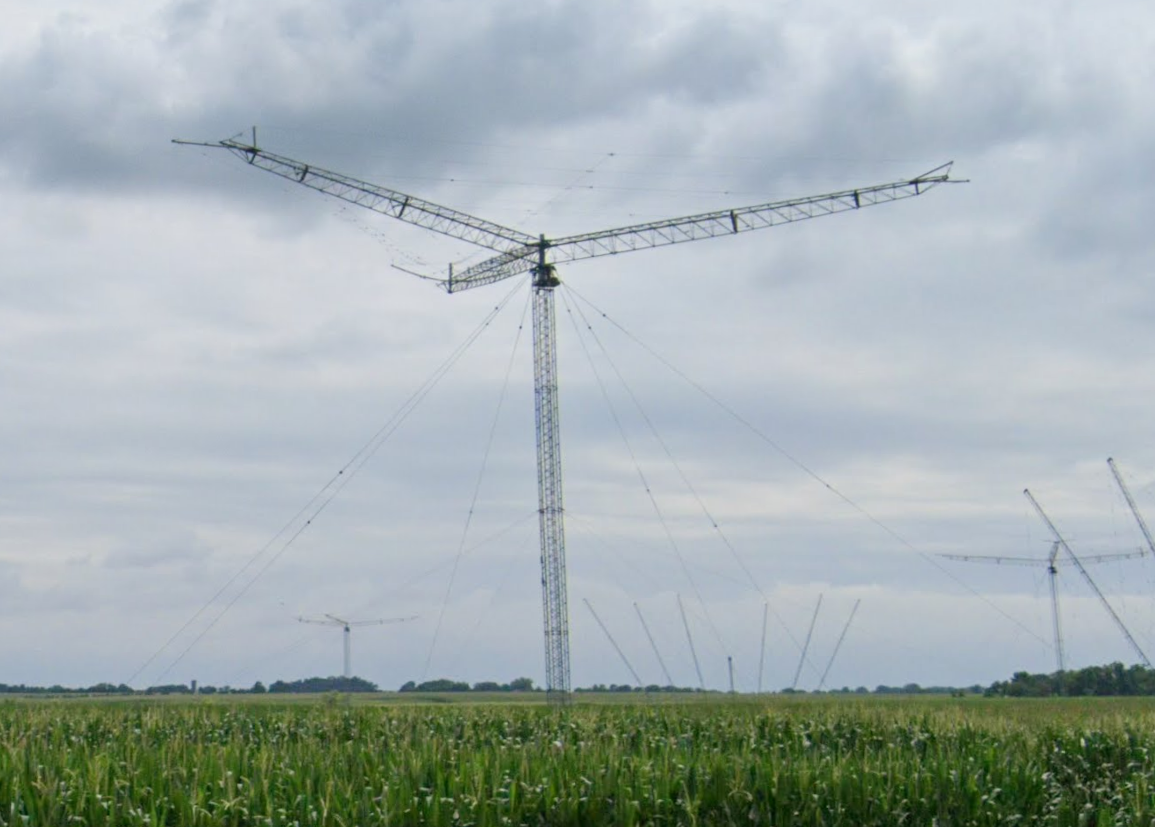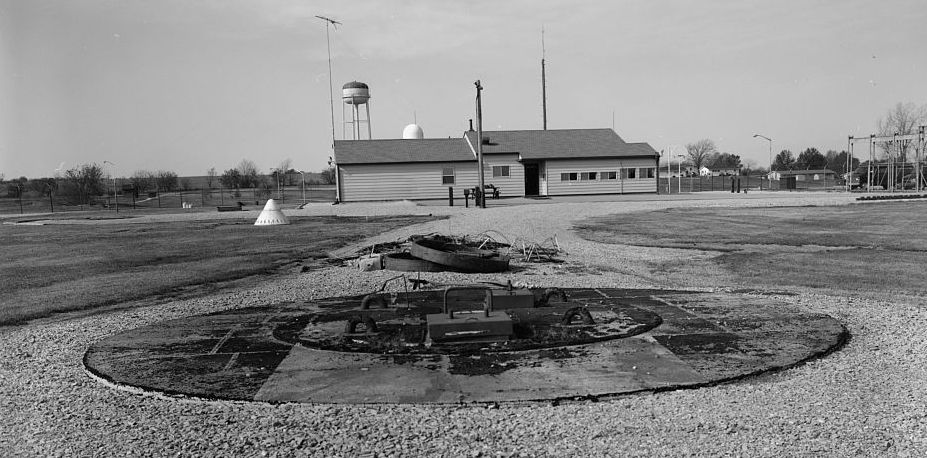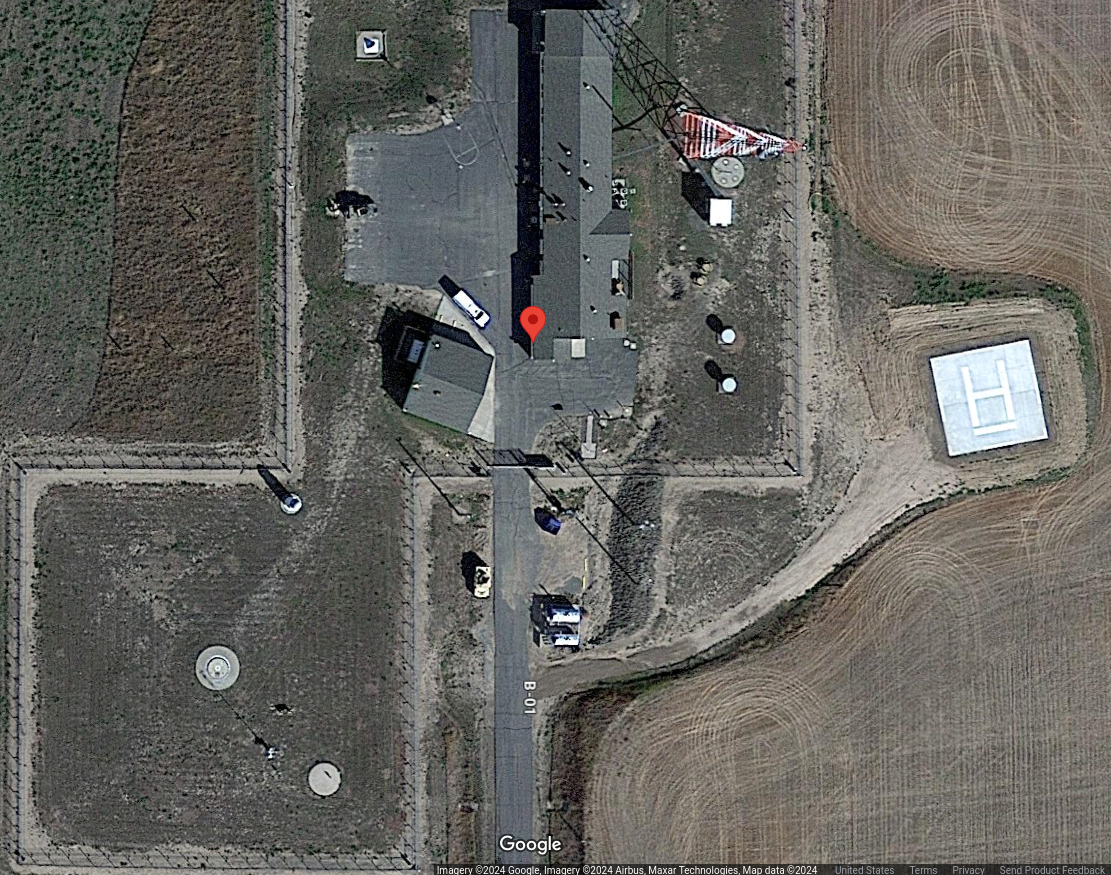To the extent that you have an opinion on something like high-frequency (HF) radio, you probably associate it with amateur radio operators, hunched over their gear late at night as they try to make contact with a random stranger across the globe to talk about the fact that they’re both doing the same thing at the same time. In a world where you can reach out to almost anyone else in an instant using flashy apps on the Internet, HF radio’s reputation as somewhat old and fuddy is well-earned.
Like the general population, modern militaries have largely switched to digital networks and satellite links, using them to coordinate and command their strategic forces on a global level. But while military nets are designed to be resilient to attack, there’s only so much damage they can absorb before becoming degraded to the point of uselessness. A backup plan makes good military sense, and the properties of radio waves between 3 MHz and 30 MHz, especially the ability to bounce off the ionosphere, make HF radio a perfect fit.
The United States Strategic Forces Command, essentially the people who “push the button” that starts a Very Bad Day™, built their backup plan around the unique properties of HF radio. Its current incarnation is called the High-Frequency Global Communications System, or HFGCS. As the hams like to say, “When all else fails, there’s radio,” and HFGCS takes advantage of that to make sure the end of the world can be conducted in an orderly fashion.
Bombs Away LeMay
The US Air Force has a long history radio, dating back to when airplanes were little more than wood and canvas contraptions. Radio, especially HF radio, played a huge role in prosecuting World War II, changing the face of warfare forever. As the Cold War years set in and strategic forces became increasingly important, HF radio systems continued to play a role. One of the biggest boosters of HF radio for coordinating strategic air forces was none other than General Curtis LeMay, who as an enthusiastic amateur radio operator well knew the power of HF radio to communicate long distances, particularly using single-sideband (SSB) modulation.
Despite this history, HFGCS itself is relatively new. It only came onto the scene in 1992, when post-Cold War military restructuring combined two earlier Air Force HF networks into the Global High-Frequency System. GHFS would undergo equipment upgrades in 2002 and get an extra letter in its rearranged acronym, becoming HFGCS. While HFGCS may have started out as the Air Force’s baby, its design is open and flexible enough that it can be used by Air Force, Army, and Navy assets anywhere in the world around the clock.
The primary fixed infrastructure of HFGCS is a network of thirteen ground stations scattered across the United States and its territories as well as allied countries around the world. The HFGCS ground stations are linked together through a combination of landlines and satellite stations to act as a unified network. Almost all of the stations on the network are “lights out” stations that are controlled remotely. The primary control point for the entire system is located at Andrews Air Force Base outside of Washington, DC, with a backup location deep in the interior of the continent at Offutt AFB in Omaha, Nebraska. Each of these two stations is manned around the clock and can control the entire network.
It’s obviously difficult to get a lot of technical detail on what sort of gear is being used at each HFGCS station, but there’s one aspect of the system that’s hard to keep from public scrutiny: the antennas. The Offutt AFB transmitter station provides a pretty good look at things, sitting as it does in the middle of a cornfield off a public road in Elkhorn, Nebraska. There sprouts a sprawling farm of directional and omnidirectional antennas, including a collection of massive AS-3482/GRC log periodic arrays. These giants have twin towers that support a rotating platform with three support booms for the radiation array. A balun at the base matches the antenna to the feedline, which is a 50-ohm hardline coax measuring a whopping 3-1/8″ (80 mm) diameter. HFGCS stations also have receive capability, of course, but given the 25,000-watt power rating on these antennas, the receivers are generally not located with the transmitters. In the case of the Offutt AFB station, the receivers are located 28 miles (45 km) away outside of Scribner, Nebraska.

Fine Business, Old Minuteman
The ability of HF radio to make contacts across the globe with no fixed infrastructure between contact points is what makes it perfect for backup communications with strategic forces. That’s not to say that it’s foolproof, of course; there certainly are ways to interfere with the ionospheric skip that it depends on, which probably plays a large part in why HFGCS is only a backup, but things have to have gone badly wrong for that to be the case.

Ironically, one of the ways for things to go wrong enough to bump HFGCS up from backup status is an all-out nuclear exchange, which would no doubt involve the 450-odd Minuteman III ICBMs that comprise one of the legs of the United States’ nuclear triad. The Minuteman missiles are kept at the ready in 45 missile alert facilities (MAFs) scattered across the American prairie. Each MAF is comprised of ten launch facilities, each storing one LGM-30 missile in an underground silo, and a separate launch control center, or LCC. The LCC is the underground bunker crewed by two Air Force officers who bear the responsibility of turning the keys that launch their flight of missiles, should it be so ordered.
But to perform that final official act of their careers, those officers have to get the coded order from US Strategic Command, typically over one of the primary secure networks. Should those links fail, though, each LCC is equipped with an HFGCS link. The fact that each LCC is no doubt slated to receive a nasty package on the appointed day means that standard HF antennas, which tend to be quite large, are far too exposed to survive and perform their backup duties. So the LCCs sport hidden HFGCS antennas that can be deployed on command.
On the transmit side, each squadron LCC has a 50′ (15 meter) deep reinforced concrete silo topped by an extremely sturdy blast door that’s flush to the ground, for maximum resistance to nearby blast waves. Upon command, the door opens to allow a telescopic HF antenna to extend up to 120′ (36 meters) above the ground. The reality, though, is that the need to transmit on HFGCS is far less important than being able to receive. That’s why the receiving antenna arrangement is a bit more complicated.

To make sure the LCC is always ready to receive and act on an Emergency Alert Message (EAM), each facility has a hardened HFGCS receive antenna array. Like the transmitting antenna, these are housed in underground silos. Each silo has six monopole steel antennas, one of which is always deployed. The five others are kept in reserve; should the main antenna get knocked down, an explosive charge at the bottom of the antenna’s tube detonates, extending a fresh antenna above the ground.
Mainsail, Mainsail
Given the highly sensitive nature of the traffic on a radio network charged in part with ending the world, you’d think that messages would be digitally encrypted and completely useless to try snooping in on. And while it’s true that there are encrypted digital modes that use HFGCS, a surprising amount of traffic is just plain old voice messages transmitted in the open. While it remains true that nothing punches through like good old Morse code on continuous wave (CW), SSB voice is far more efficient. The video below shows British ham M0SZT monitoring HFGCS from an adorable shepherd’s camp somewhere in the Peak’s District, not far from the RAF Croughton HFGCS site:
That’s not to say that you’d be able to understand the messages, the bulk of which is a block of 30 numbers and letters, with the former stated as the standard NATO phonetic alphabet. Unless you have the decryption code, the message will read as gibberish. In fact, you can’t even derive any useful information from the length of the message, since it’s always 30 characters long. About the only metadata you could potentially glean would be the station code names embedded in the message, but since those are randomly changed every day, there’s not much point.
Still, there’s plenty to be gained from monitoring HFGCS, especially in times of geopolitical tumult. If the balloon goes up, so to speak, then traffic on HFGCS will undoubtedly increase markedly, as it will on its Russian counterpart, colloquially known as Bear Net to the US military. It’ll make for interesting listening — at least for a few minutes.
















There are situations where even the backup fails
So then it’s either get shot or turnkeys
https://youtu.be/5bF1_PGMAj0?si=H8LAp-V_vshmdDw2
Better learn russian too these days.
I guess a backup infrastructure like this is good for natural disasters or extreme chaotic weather conditions, but I also note that for a very bad day conflict situation, any backup is as good as you are defending them and they last as long as you can hide/keep/provide energy or fuel. So fuel storage is key.
Я полагаю, что резервная инфраструктура, подобная этой, хороша для стихийных бедствий или экстремальных хаотичных погодных условий, но я также отмечаю, что для очень плохой дневной конфликтной ситуации любая резервная инфраструктура хороша настолько, насколько вы ее защищаете, и она продержится столько, сколько вы сможете спрятать/сохранить/предоставить энергию или топливо. Поэтому хранение топлива является ключевым фактором.
Almost perfect Russian ;)
Well I tried :) Talking about Russia, America, radio waves and why not Japan also :
https://www.youtube.com/watch?v=SrZArIrYXJY
I fell in love with the guitarist at 27:22 She is having a blast! so just play this in your weekend BBQ and you have instant fiesta!
Nothing to do with the actual topic but come on , chill!
Looks like they can get some one on one basketball action going on the grounds when boredom strikes.
Navies still use semaphore, sometimes the old ways are the best.
Agree. And a signal lamp to send Morse.
PS: Late 2003 was a sad time in the US Navy, when TPTB decided to get rid of the Signalman rating. QMs had to take up the slack.
The guy who lived next door to me when I was a kid was an EE who worked for the company (Raytheon?) that designed those pop up HF antennas. When he died, his son gave me his Smith Chart slide rule and well used copy of Reference Data for Radio Engineers
Talk is cheap, real operators beep….
While Amateur radio is mostly a world wide game of, “can you hear me now?” It’s also, when appreciated more than superficially, electromagnetic wizardry as we bend non visible light to our will, and attempt to understand the ionosphere’s current temperament for reflection. There are no random strangers in Ham Radio, only random connections between a unique family of technologists .
Would this system be able to transmit internet data (such as documents, low-res pictures, .FLAC files…) by turning it into audio, like the old 56k modems did?
Yes. Data communications is used extensively on Amateur Radio HF bands in exactly the way you describe, except in this era, the “modem” is mostly software rather than hardware.
The Militaries know that the first thing to go during a major conflict will be the communication and GNSS satelliites. Destroying them in space will leave behind so much orbiting shrapnel that all surviving LEO satellites will be lost eventually. Global radio communications will be forever back in the 1970s. GPS, Iridium, Project Kuiper, Starlink, all gone. The geostationary satellites that are not a military target, like DirecTV, may survive.
I disagree!
Militaries know that the first thing to go in a major conflict is their well laid plans!
B^)
As Mike Tyson said “Everyone has a plan until I punch them in the mouth”
HF was phased-out at the Minuteman sites several decades ago due to the JCS agreeing the sites had enough redundant systems to receive Emergency War Orders to where their HF/SSB gear could be retired.